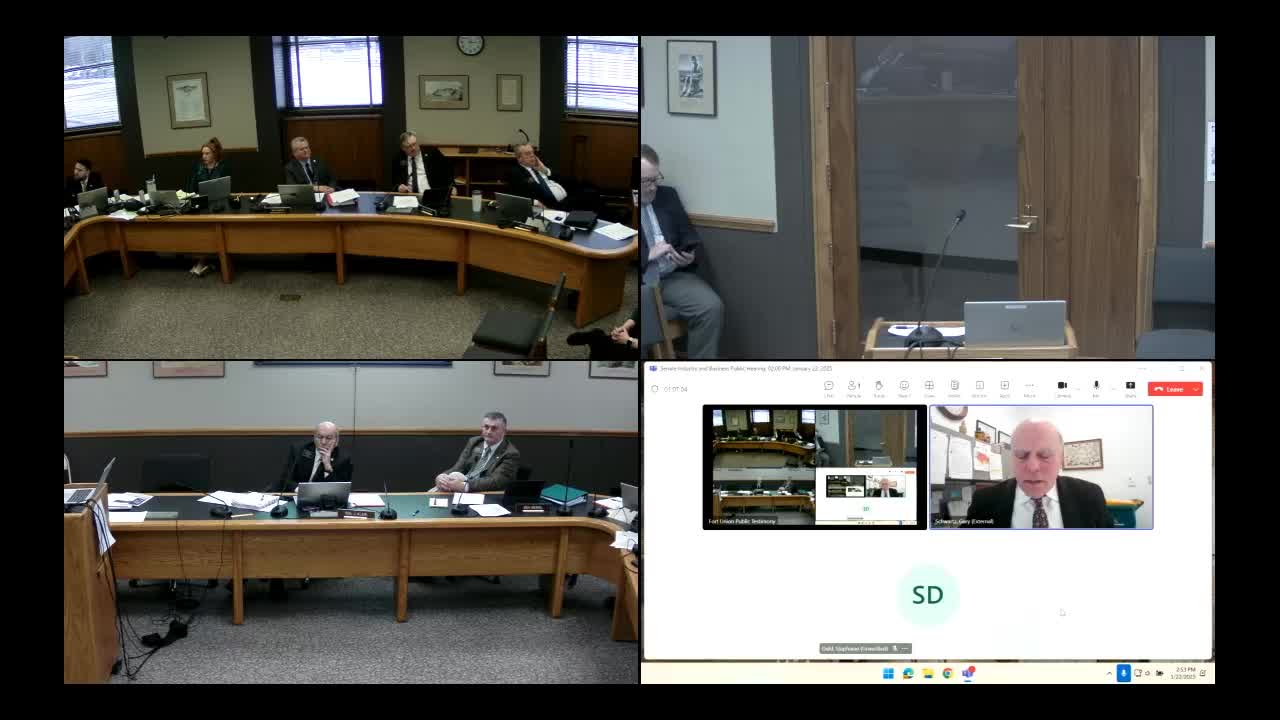North Dakota lawmakers address radon risks in homes amid rising health concerns
January 22, 2025 | Industry and Business, Senate, Legislative, North Dakota
This article was created by AI summarizing key points discussed. AI makes mistakes, so for full details and context, please refer to the video of the full meeting. Please report any errors so we can fix them. Report an error »

In a recent Senate Industry and Business meeting held in North Dakota, a compelling discussion unfolded around the environmental health risks posed by radon gas, particularly in residential areas. The meeting highlighted a significant case that brought national attention to radon exposure, illustrating how a seemingly routine workplace incident revealed alarming levels of radon in a home, prompting legislative action decades ago.
The narrative began with a man who, after returning to work, triggered radon detectors despite not having been exposed to the hazardous gas at his job. Investigations revealed that his home had dangerously high radon levels, leading Congress to enact laws mandating radon education and testing. This legislative push raised public awareness about radon, which was previously considered primarily an occupational hazard for uranium miners.
However, as the discussion progressed, it became clear that interest in radon has waned in recent years, with regulations and testing provisions significantly reduced. Experts emphasized that while open uranium mines are not the primary concern, homes built over radon-rich soil pose a serious risk. In North Dakota's harsh winters, the combination of sealed homes and significant temperature differences can create conditions that draw radon gas indoors, particularly affecting basements where children often sleep.
Dr. Schwartz, a key speaker at the meeting, underscored the dangers of radon exposure, especially for children who are more susceptible to lung diseases due to their higher breathing rates and lung surface area relative to their body size. He confirmed that radon levels have been consistently measured across all counties in North Dakota, with many areas potentially facing elevated risks.
As the meeting concluded, the urgency of addressing radon exposure was palpable, leaving attendees with a renewed sense of responsibility to advocate for public health measures. The discussion not only served as a reminder of the past legislative efforts but also called for a resurgence of interest and action to protect communities from this silent threat lurking in their homes.
The narrative began with a man who, after returning to work, triggered radon detectors despite not having been exposed to the hazardous gas at his job. Investigations revealed that his home had dangerously high radon levels, leading Congress to enact laws mandating radon education and testing. This legislative push raised public awareness about radon, which was previously considered primarily an occupational hazard for uranium miners.
However, as the discussion progressed, it became clear that interest in radon has waned in recent years, with regulations and testing provisions significantly reduced. Experts emphasized that while open uranium mines are not the primary concern, homes built over radon-rich soil pose a serious risk. In North Dakota's harsh winters, the combination of sealed homes and significant temperature differences can create conditions that draw radon gas indoors, particularly affecting basements where children often sleep.
Dr. Schwartz, a key speaker at the meeting, underscored the dangers of radon exposure, especially for children who are more susceptible to lung diseases due to their higher breathing rates and lung surface area relative to their body size. He confirmed that radon levels have been consistently measured across all counties in North Dakota, with many areas potentially facing elevated risks.
As the meeting concluded, the urgency of addressing radon exposure was palpable, leaving attendees with a renewed sense of responsibility to advocate for public health measures. The discussion not only served as a reminder of the past legislative efforts but also called for a resurgence of interest and action to protect communities from this silent threat lurking in their homes.
View full meeting
This article is based on a recent meeting—watch the full video and explore the complete transcript for deeper insights into the discussion.
View full meeting
